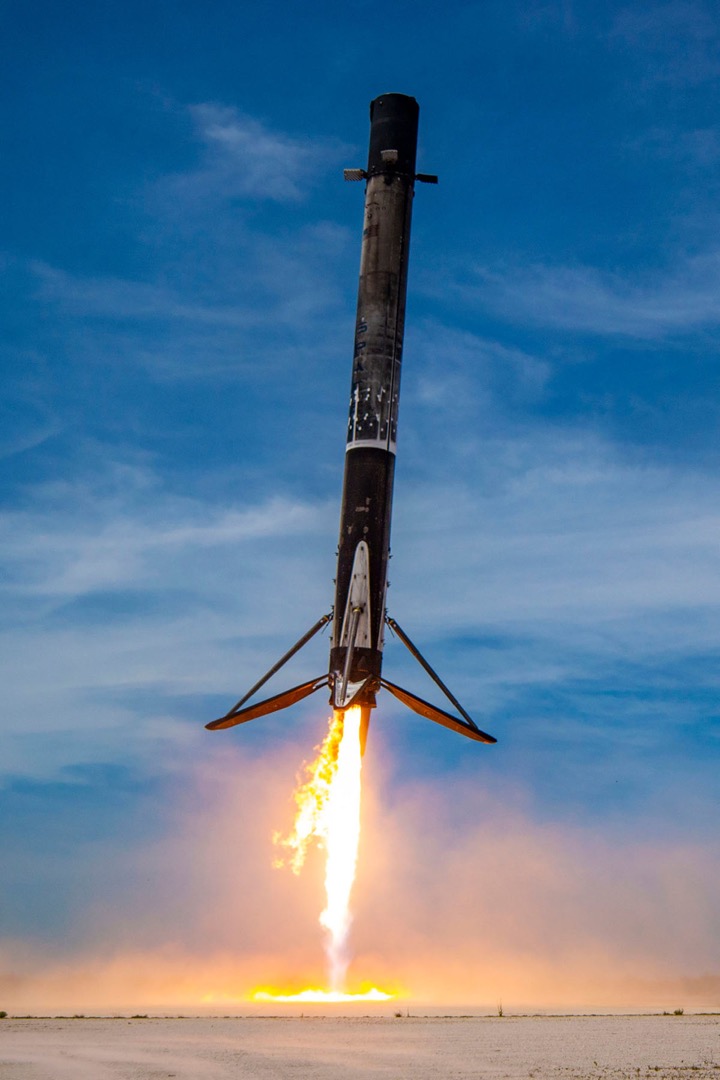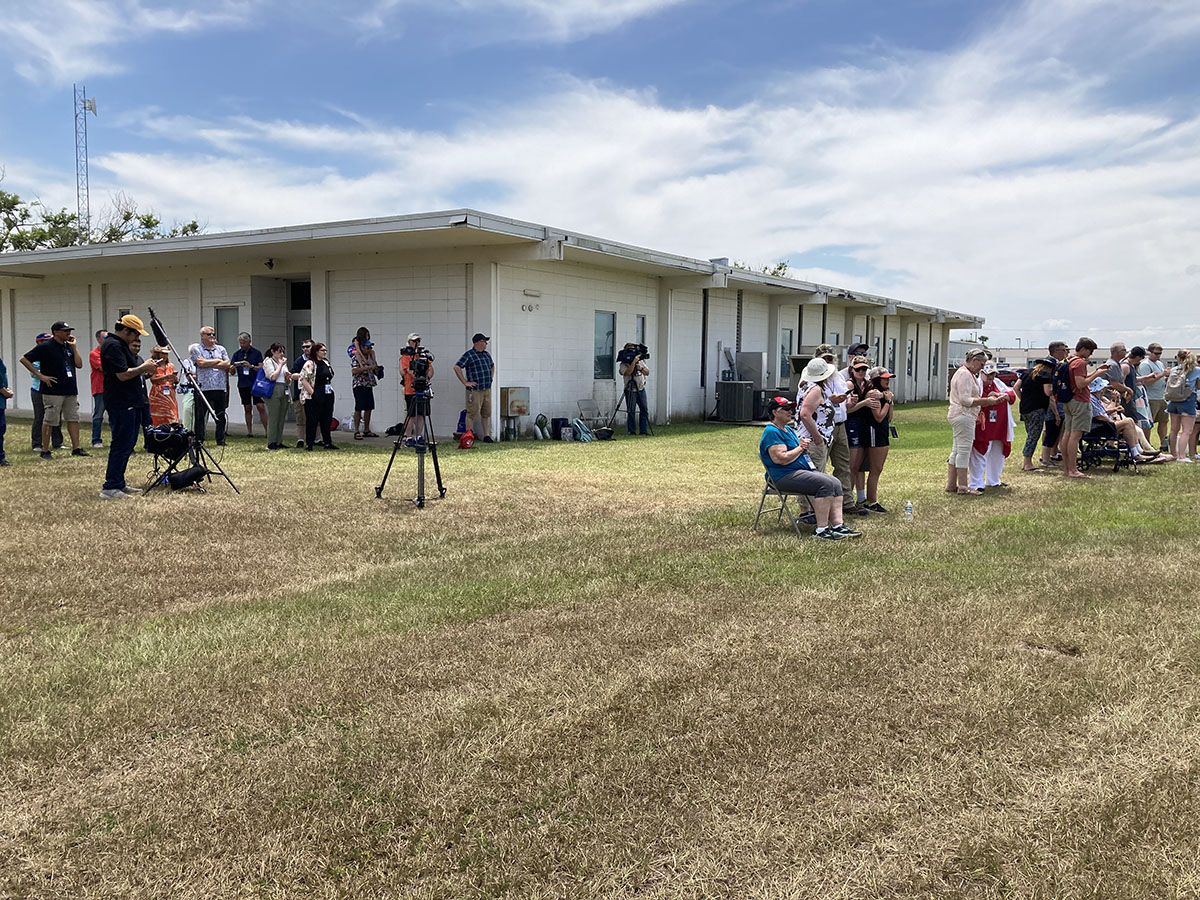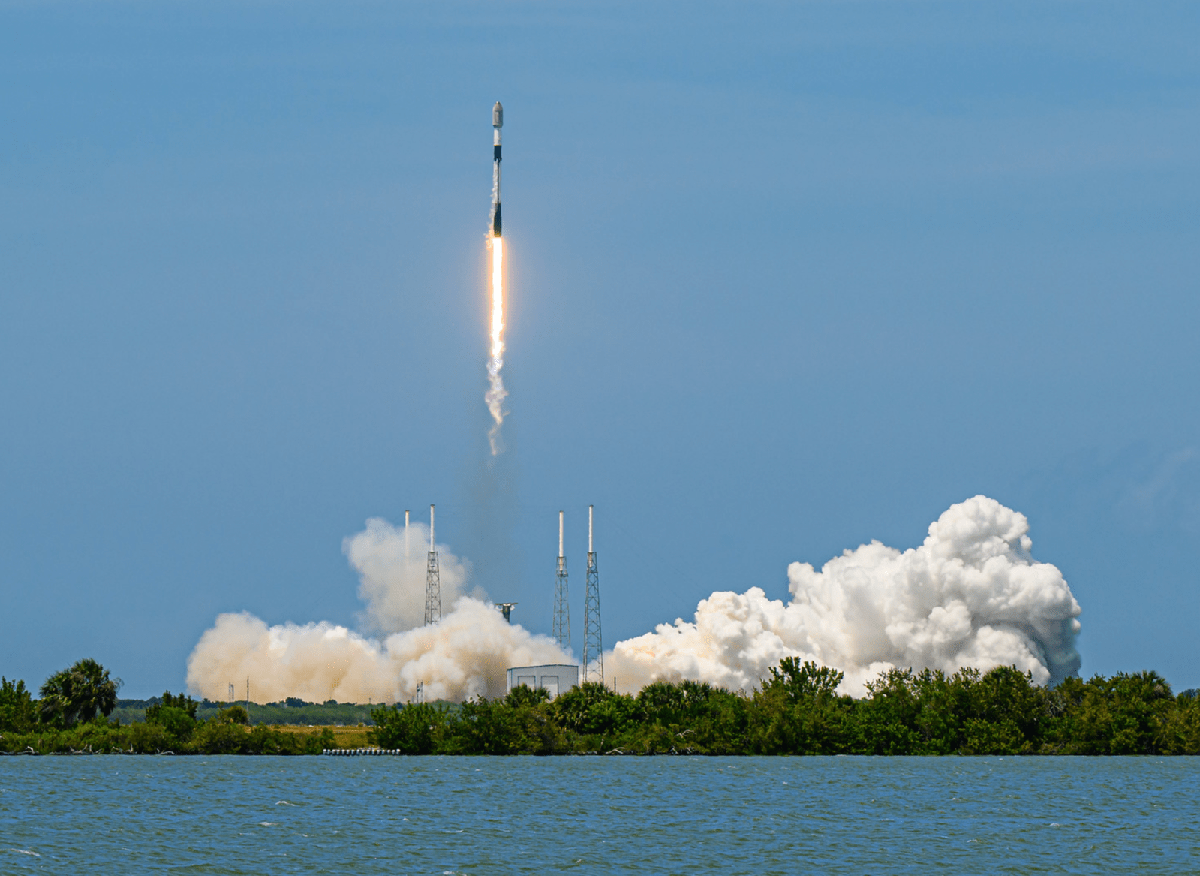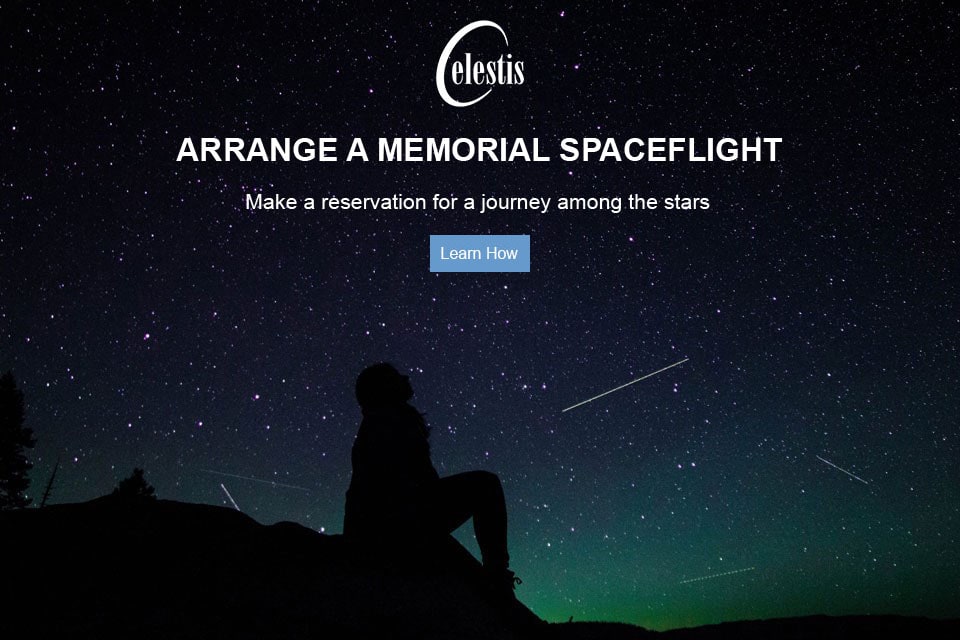A Day in the Life at Celestis, Part Three: Ascension Flight Launch

The SpaceX Transporter 5 Rideshare Falcon 9’s first stage lands at Cape Canaveral Space Force Station’s Landing Zone 1. Photo credit: SpaceX
by Emily Carney
If all difficulties were known at the outset of a long journey, most of us would never start out at all. – Dan Rather
The word “hegira” connotes taking a complex, often dangerous voyage. Many Celestis memorial spaceflight participants knew what taking an arduous journey during their lifetimes was like. Derek Yanes navigated his all-too-short life around a chronic illness that sadly truncated his time on Earth. Marjorie Dufton – while having lived 92 full, prosperous years – was held back from achieving her spaceflight dreams because of the rigid social mores of the 1960s, and still desired to take that next step into the history books. Another memorial spaceflight participant, Raymond Pena, emigrated from Cuba to the United States as a young man, braving danger in search of a better life. Each made their unique mark upon those around them, impressing upon their families and loved ones the importance of living life with passion, zest, and enthusiasm. Celestis’ Ascension Flight participant stories – all told during the pre-flight memorial service – emphasized the indelible mark these incredible souls left despite their deeply-felt absence in Earthly form.
The memorial flight participants' stories have much in common with the history of human spaceflight. Perseverance – having a distinct goal and sticking to it, no matter what – is an element just as, if not more, important than the fuel required to lift rockets off launch pads and into the cerulean skies over Florida’s Space Coast. It’s why after so many early rocket failures, NASA kept plugging away during the late 1950s and early 1960s and eventually succeeded in sending humans to space – and ultimately, to the Moon.

Celestis families and friends await the SpaceX Transporter 5 Rideshare launch, which lofted Celestis Memorial Spaceflights’ Ascension Flight into orbit. Photo credit: Celestis, Inc.
One could say there’s a bit of Deke Slayton in each memorial spaceflight participant.
For those who don’t know who that is, Donald K. “Deke” Slayton was one of the first seven NASA astronauts, who were nicknamed the “Mercury 7.” Shortly before what was supposed to be his first orbital “Delta 7” spaceflight in 1962, Slayton was informed he was suffering from atrial fibrillation, a heart condition. This effectively ended his career as an astronaut. This man who once represented America's finest physical specimens wasn’t even allowed to fly an airplane unsupervised.
While this news was a massive blow (as it would be to just about anyone), Slayton did his best to persevere. He stayed at NASA and was offered the consolation prize of being chief of the astronauts; the legendary crews NASA flew during the 1960s – including Apollo 11’s rotation of Neil Armstrong, Buzz Aldrin, and Michael Collins – were all assembled by him. But Slayton continued to fight his “no-fly” status and went on an extensive fitness and vitamin regime to conquer his heart problem.
Contact us for more information or to receive launch updates
At long last, in 1972, he was returned to flight status after he was certified healthy. In 1975, he made his long-awaited spaceflight during the final Apollo mission, the Apollo-Soyuz Test Project (ASTP). Post-NASA, Slayton was the first President of Space Services, Inc. of America (SSIoA), the company that launched the world’s first privately funded rocket, Conestoga I, in 1982. He was also among the first to envision memorial spaceflights and is considered Celestis’ spiritual godfather. Slayton’s entire career – from the moment he was told he couldn’t fly in space to the failure of SSIoA’s first commercial launcher, the Percheron rocket, in 1981 – was an example of “true grit.”
They may not have been Mercury astronauts, but Yanes, Dufton, and Pena all exemplified the same qualities during their vastly different lives. Yanes didn’t let a chronic illness defeat him and stayed true to his passions. Dufton held onto her longtime dream of becoming a spacefarer. Pena made a dangerous journey to secure better opportunities for himself and his family. Their abilities to “bounce back” and stay determined were unparalleled.
And now – like for Deke Slayton in 1975 – the wait was over. The Ascension Flight’s Falcon 9 rocket was poised vertically on Cape Canaveral Space Force Station’s (CCSFS) Space Launch Complex 40, the historic home of Titan launch vehicles during the early Space Age, loaded with fuel, satellites, and 47 brave Celestis passengers. And the clock was counting down.
10…9…8…7…6…5…4…3…2…1…
“One Heck of a Salute”
Celestis memorial spaceflight participants’ families and friends waited – in hushed, nervous tones, many following along with SpaceX’s live countdown – at Sands Space History Center, located just outside of CCSFS. Then suddenly, remarkably, the Ascension Flight rose from the launch pad atop a column of orange flames and white vapor. The energy among the crowd was incredible. Any nervousness evaporated. While many wept seeing their loved ones achieve their (pardon the pun) “out of this world” dreams, many cheered and whooped, punching their fists in the air joyously. The mood was far from scared, somber, or melancholy – there was a sense that a new, extended life was just beginning. The overall tone was one of joy.
Oddly, the first few seconds of the launch were utterly silent, with the only visual signifiers being the flames leaping from the Falcon 9’s first stage engines and the rocket rising rapidly from the launch pad. Then, the sound waves hit, causing the crowd to erupt in more cheers and whoops. It struck me that many of the families and friends of flight participants were from entirely different backgrounds and cultures, but many had arms around each other during the launch. Spaceflight has a way of unifying even the most disparate crowds.
Ralph Pena, Raymond’s son, viewed the launch as a promise kept to his always-brave father. He enthused, “It was an awesome experience…indescribable, to see how the rocket lifted off, and you could see the ignition behind it as it lifted into the sky. There was a lot of emotion there…I knew my dad was getting his final wish of getting out into space. It was just…the roar of the engines. It was just magnificent, magnificent!”
Because the rocket’s payloads were being placed into a Sun-synchronous polar orbit (a north-to-south orbit versus the west-to-east equatorial orbit the International Space Station traverses), we watched the launch vehicle zoom through the sky directly overhead, headed due South. Then it disappeared into the southern horizon.

The SpaceX Transporter 5 Rideshare launch leaps off SLC-40 on May 25, 2022. Photo credit: John Kraus Photos
But the show wasn’t over yet.
Out of sight, the Falcon 9’s first stage separated and began its return to Earth. Part of the “wow” factor of Falcon 9 launches is that the first stage can make a vertical landing and be reused for future launches to cut costs. Many first-stage landings take place on a drone ship miles offshore in the Atlantic. However, today the landing was due to take place at the Space Force Station’s Landing Zone 1 – close to the Sands Space History Center. The Ascension Flight families and friends would be treated to the ultimate “send-off.”
About 10 minutes after the launch, the Falcon 9 first stage screamed back diagonally to Landing Zone 1 like a flaming javelin piercing the skies. The launch guests looked incredulous as a thunderous sonic boom descended upon them before the first stage disappeared behind the tree line and landed vertically. It was a sight (and sound) none of us would soon forget. Like astronaut Don Thomas said at the Ascension Flight pre-flight memorial service, “That’s like a salute to your friends and family. Not a 21-gun salute, but this is one heck of a salute on their final journey into space.”
Ralph Pena raved about the first stage landing experience: “That was incredible, too. I caught it out of the corner of my eye just before it ignited. And then just as it was about to touch down, you hear the sonic booms, and it just gave me chills.”
Perhaps this series of articles should end with the words of Michael Dufton, Marjorie’s son. Remember, Marjorie Dufton nearly made it into the “First Women in Space” program, but before she could, that program was disbanded. Her spaceflight dreams were put on hold for over 60 years. But this author feels Marjorie would agree that the wait was worth it. To quote Deke Slayton shortly after reaching orbit during the ASTP mission, “Man, I tell you, this is worth waiting 16 years for!”
In conclusion, here’s Michael’s take on the Celestis memorial spaceflight experience:
It was just like something out of science fiction. Only a few years ago, you could only imagine something like that taking place, and seeing it firsthand was just amazing. It was the most amazing experience; I think, one of the most amazing of my life. It's bringing my mother's final wish to life. She was going to be an astronaut. She tried to be an astronaut, but that program was disbanded…now she's actually in space, which is something she was never able to do while she was alive.
*****
Don’t miss Emily Carney’s reflections upon the Ascension Flight in an upcoming blog post. If you missed parts one and two of this series, here are the links:
A Day in the Life at Celestis: Pre-Launch
A Day in the Life at Celestis, Part Two: The Memorial Service




